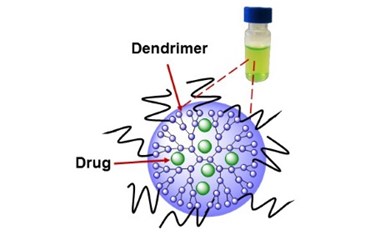Glowing Nanoparticles Guide Surgery And Eradicate Remaining Cancer Cells
By Chuck Seegert, Ph.D.

Ensuring that an entire tumor has been removed is a major goal of cancer surgery and one that has been advanced by Oregon State University (OSU) researchers. By using nanoparticles that selectively impregnate tumors, surgeons can fluoresce the malignant tissue, delineating exactly where to cut. If small tumor portions remain, those same nanoparticles — in conjunction with phototherapy — can kill the remaining cancerous cells.
Cancer can be closely intertwined with the normal tissue in a patient’s body, making it difficult to surgically remove. If even a small amount of cancer tissue is left behind, the tumor can grow back, causing a recurrence of the disease that is often fatal. In an effort to prevent this, it is a common practice to take a margin of healthy tissue from the area surrounding the tumor. This provides a better chance that the diseased tissue will be completely removed.
To assist surgeons in their work, a newly developed approach combines phototherapy with surgery to maximize the tumor removal operation. The technology is based on a chemical called naphthalocyanine, which reacts uniquely to near-infrared light.
“With this approach, cancerous cells and tumors will literally glow and fluoresce when exposed to near-infrared light, giving the surgeon a precise guide about what to remove,” said Oleh Taratula, an assistant professor in the OSU College of Pharmacy, in a recent press release. “That same light will activate compounds in the cancer cells that will kill any malignant cells that remain. It’s an exciting new approach to help surgery succeed.”
While the glow of naphthalocyanine can provide a signal to surgeons, its other properties are also very powerful. Exposure of the molecule to near-infrared light can lead to heat generation. Additionally, the chemical will also produce reactive oxygen species that can be toxic to the tumor cells. By adjusting the intensity of the light, naphthalocyanine’s effects can be controlled — a result that was successfully confirmed in laboratory tests on mice.
“This is kind of a double attack that could significantly improve the success of cancer surgeries,” said Taratula, according to the press release.
Naphthalocyanine is not suitable for in vivo use, because it often clumps at undesirable locations in the body, according to the press release. To overcome this, the OSU team developed a way of encapsulating the material inside of a polymer called a dendrimer. The dendrimer can be designed to be water soluble, and it basically forms a nanoparticle of naphthalocyanine that passes through the body until it finds the tumor.
Nanoparticle research continues to become more sophisticated in the field of cancer therapeutics. For example, a recent article on Med Device Online discussed a nanoparticle that could localize to tumors and dispense targeted chemotherapy upon exposure to radiation.
Image Credit: Oregon State University
